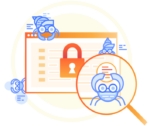
Software engineering leaders need to foster collaboration with site reliability engineers (SRE) in order to scale unplanned work and improve customer experience. Software engineering teams tend to focus on releasing new product features quickly, which causes them to not always prioritize the reliability of new features.
Gartner predicts that by 2027, 75% of enterprises will use SRE practices organization-wide to optimize product design, cost and operations to meet customer expectations, up from 10% in 2022. Today, more than ever, customers are expecting applications to be reliable, fast and available on demand. When organizations present products that do not meet these expectations, customers are quick to seek other alternatives.
To improve product reliability, IT organizations are starting to adopt SRE principles and practices when designing and operating systems. However, SRE is rarely embedded into every product’s development life cycle. While software engineering leaders are engaging site reliability engineers, they are only performing occasional reliability exercises.
Foster Collaboration With Site Reliability Engineers
Now is the time for software engineering leaders to be building lasting partnerships with site reliability engineers as a part of their continuous quality strategy by adopting SRE practices and tools. Software engineering leaders will only be able to deliver the business value of their products to customers if they are treating reliability as a differentiating feature.
Software engineering teams should be addressing reliability issues early on in their product’s life cycle and collaborating with site reliability engineers throughout the entirety of a product’s design and delivery activities. Doing so is more time-efficient and economical than needing to resolve a product’s issue after it has been released.
Collaboration with site reliability engineers can be fostered by defining service level indicators (SLIs) and service level objectives (SLOs) that capture customer expectations for both product reliability and product performance. SLIs and SLOs will allow teams to clearly evaluate how well a product is meeting customer needs.
Enforce an SLO Action Plan
Failure is an inevitable aspect of service delivery, so it is important that software engineering leaders have a plan of action to effectively manage risk. Design an action plan for each SLO with site reliability engineers. This plan should provide guidance on what needs to be done if an SLO is breached, trending toward breach and/or the breach is imminent.
Optimize Development and Design with SRE Practices
To further a culture of reliability within their teams, software engineering leaders need to incorporate SRE practices and tools that drive lasting improvement. There are several activities software engineers should be performing with site reliability engineers in order to optimize development and design for meeting SLOs and SLIs: blameless postmortems, chaos engineering, toil management, and monitoring and observability.
Blameless postmortems can be used to identify what is causing triggering events such as failure or SLO breach. This practice allows organizations to learn and avoid repeating the same mistakes, and prevent future ones. Chaos engineering uses experimental failure testing to uncover vulnerabilities. This provides information about system behavior during failures and enhances software engineering teams’ ability to improve product design. Toil management eliminates low-value work and repeatable tasks. Lowering toil allows teams to focus more on meeting SLOs. Monitoring and observability identifies the best methods needed to measure SLIs and SLOs.
These technologies will allow software engineering teams and site reliability teams to work collaboratively to improve their ability and solve reliability issues. Software engineering teams need to work closely with site reliability engineers to help define SLOs, share accountability for meeting SLOs and adopt SRE practices and tools.






